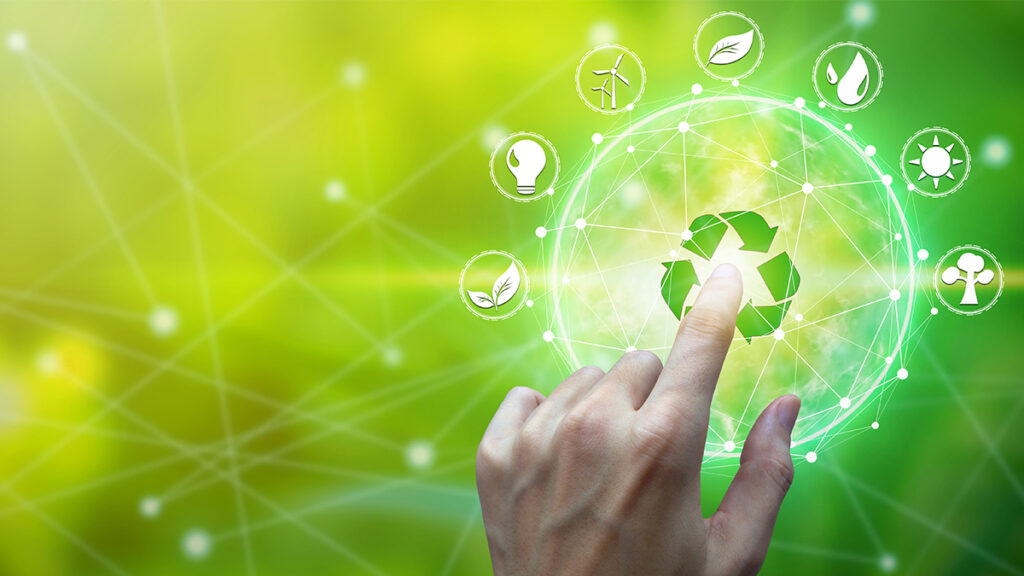
Environmental technology encompasses several diverse practices. Among others, these practices include using technology that harnesses the power of the sun, wind, and water to reduce our dependence on energy that’s generated by burning fossil fuels; recycling obsolete, damaged or otherwise unwanted items and materials to preserve existing resources and reduce the burden on our overflowing landfills; using LED, CFL and other energy-efficient lighting in and around the home; and incorporating a home rainwater harvesting system to collect water for drinking, cooking and bathing, thereby helping to conserve our diminishing supplies of freshwater.
Each one of these practices is environmentally friendly. Whether you decide to apply one or all of them, environmental technology will make your home greener and much more fuel-efficient. It will also be one small step in helping to reduce humanity’s negative impact on our natural resources and environment.
How to Create a Greener Home
Sustainable Technology
Sustainable energy-generating technologies include photovoltaic arrays that create power from the rays of the sun; wind turbines that help us exploit the power of the wind; and turbines and other equipment that produce hydroelectricity by utilizing the gravitational force of falling or flowing water.
Solar power, wind power, and hydroelectricity are renewable and sustainable. Not many of today’s homes use wind or water turbines to generate electricity, but the number of solar panels being added to roofs is skyrocketing. Each of these technologies allows us to reduce our consumption of energy produced from fossil fuels like coal, oil, and natural gas.
Recycling
Recycling unwanted items and materials serves two purposes. Besides helping to decrease the huge number of items that are disposed of in landfills every day, recycling technology helps preserve our existing natural resources. Recycled items are repurposed, and they reduce the need to use resources to make brand-new products. Recycling is easy to do, and in many cases (although not all) it’s free.
Energy-Efficient Lighting
LED (light-emitting diode) and CFL (compact fluorescent lamp) lighting are two fairly recent innovations, becoming widely used within the last decade or so. Both these types of lighting are much more energy-efficient than old-style incandescent bulbs. They represent two environmentally sound technologies that can be used by anyone in any home.
Rainwater Harvesting
Rainwater harvesting systems are another example of technology that’s being put to work to help make homes greener and less wasteful. A rainwater harvesting system can easily be incorporated into a new home’s design. And, in many cases, it’s possible to add this type of water-saving system to an older home. Technology like a rainwater harvesting system can help us conserve a precious resource that’s rapidly dwindling.
Using technology in the home to create renewable energy and collect rainwater is a means to an end. So is recycling and using LED and CFL lighting. They’re all intended to help us conserve natural resources and preserve our fragile environment.
Energy Star Appliances
The U.S. Department of Energy and the Environmental Protection Agency go hand-in-hand in curbing excessive household energy usage. As a response to our need to conserve energy, the Energy Star label was launched to help consumers identify household appliances that emit fewer greenhouse gases and other harmful pollutants.
This trusted government-certified symbol follows different parameters for every type of product, and not every appliance is granted one. In a nutshell, Energy Star appliances need to meet two criteria. First, they have to meet the demands of consumers in terms of quality and performance. And second, they have to follow federally-mandated guidelines concerning energy efficiency. Naturally, Energy Star-certified appliances use less energy as compared to conventional ones.
For instance, an Energy Star refrigerator is 20% more energy-efficient, while dishwashers cut energy use by around 12% as compared to non-certified products. This, in turn, translates to lower electricity bills and fewer carbon footprints.
Home Energy Management Tool
Monitoring your home energy use is a big step towards lowering your overall power consumption. From simple monitoring tools to comprehensive, all-in-one energy management devices, this technology allows homeowners to control energy use in different parts of their home. It gives you both the transparency and the opportunity to correct energy-wasting habits that you weren’t even aware of.
Working similarly to a plug-and-play device, an energy monitor tracks down energy consumption in specific areas, along with the times of the day power is most consumed. Depending on the device, data can either be sent to your computer or to your smartphone. Some models also enable you to remotely control your household appliances so you can significantly cut power consumption.
Geothermal Heat Pump
Indoor temperature dictates comfort and livability, making it a critical component in every household. Since traditional HVAC systems account for about half of the power consumption of an American home, it’s wise to invest in eco-friendly cooling and heating devices that can give you a quick ROI.
Contrary to HVAC systems, a geothermal heat pump is installed underground. Instead of exchanging indoor and outdoor air for temperature regulation, this eco-friendly heat pump is more efficient since the temperature undergound is more stable. Additionally, it is not exposed to any outdoor elements, making it a better choice as far as durability is concerned. The installation fee may be more expensive than getting a conventional HVAC system, but it can cut utility costs by 40%.
Programmable Thermostat
Lastly, considering that cooling and heating systems take the lion’s share in utility bills, investing in a programmable thermostat is both a green and budget-friendly move. The device is quite simple. Encode your preferences in terms of temperature control and it will do all the work for you.
Just like other types of household devices, a programmable thermostat comes in different functionalities. The advanced models allow you to set different commands every day of the week, while other thermostats only accept two adjustment schedules–one for the weekdays and one for the weekends. Regardless of the model, a programmable thermostat keeps your utility bills low by giving your HVAC system a hand in maintaining optimal indoor temperatures.






